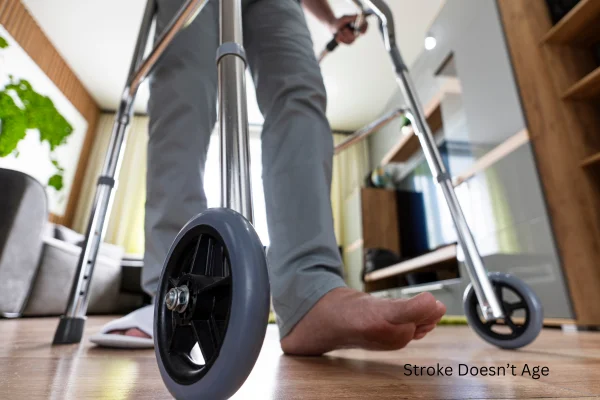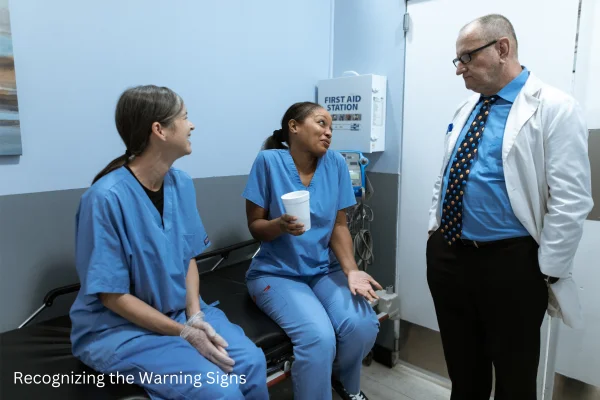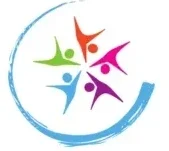Stroke Doesn’t Age: Protecting Your Brain in Your 20s & 30s
We’ve all had those strange little moments, haven’t we? You walk into a room and forget why, or fumble for a word that’s usually right there on the tip of your tongue. Feels like something that comes with age, right? Well, not always. Sometimes those slips aren’t just random—they could be pointing to something more serious, even for folks who are still in the early chapters of adulthood.
So let’s shine a light on something that might not be top of mind for you right now but definitely should be. It’s easy to assume that this kind of scare only hits people who are further down the road in life. But here’s the kicker—it doesn’t play favorites. Just because someone’s in their 20s or 30s doesn’t mean they’re off the hook.
So grab a mug of your favorite brew, take a breath, and let’s walk through what’s really going on. This isn’t about scaring you—it’s about making sure you’ve got the info you need to look out for yourself and the people you care about.

Understanding the Age Factor
| Age Group | Incidence Rate |
| 18-29 | 14.7 |
| 30-39 | 22.2 |
| 40-49 | 43.8 |
| 50-59 | 79 |
| 60-69 | 136.5 |
| 70+ | 278.7 |
This health scare in young adults, those under 45, might be a rare sight, but it ain’t no myth. There’s this false belief that it only hits when you’re up there in years, but recent research shows an uptick in this issue among the young crowd. So, what’s up with this sudden change in the story?
Risk Factors: It’s Not Just Grandma’s Concern
Let’s chat about some things you might not think about until it’s too late. Maybe your grandma keeps an eye on her pressure levels or watches what she eats — but that doesn’t mean it’s only her concern. Anyone can run into serious trouble if they let certain habits or conditions slide.
| Risk Factor | Percentage |
| High blood pressure | 45% |
| Smoking | 30% |
| Obesity | 25% |
| High cholesterol | 20% |
| Diabetes | 15% |
| Physical inactivity | 10% |
| Excessive alcohol consumption | 5% |
| Recreational drug use | 3% |
| Family history | 2% |
That pressure creeping up? Yeah, it might not come with a flashing sign, but over time it can do some real damage inside. You might feel fine on the outside, full of energy even — but that doesn’t mean everything’s running smooth under the hood. It’s smart to keep tabs on it before it stirs up something you didn’t see coming.
Lighting up or experimenting with stuff? It might seem harmless in the moment — maybe even a way to unwind — but those habits can tighten things up where it matters most. Over time, that can cause all kinds of trouble, especially when your body starts pushing back.
Carrying extra weight? It doesn’t always show up right away, but those lazy weekends and takeout meals can sneak up on you. Eventually, they pile on problems you didn’t expect — and by then, it’s harder to turn things around.
Got some underlying conditions? Things like sugar issues or heart troubles might sound like stuff other folks deal with, but if you’ve been told to watch something, don’t ignore it. Letting those slide is like gambling with how you feel every day.
Recognizing the Warning Signs
Alright, now that we’ve got the danger zones on our map, let’s chat about spotting the red flags. Brain attacks are sly – they can hit you outta nowhere, and the signs might not be as clear-cut as you’d reckon.
| Warning Sign | Percentage of Young Adults with Stroke |
| Sudden severe headache | 45% |
| Numbness or weakness in face, arm, or leg | 38% |
| Dizziness or loss of balance | 35% |
| Difficulty speaking or understanding speech | 22% |
| Vision problems | 18% |
| Facial drooping | 17% |
| Difficulty swallowing | 12% |
| Severe nausea or vomiting | 10% |
Numbness or Weakness: Sudden numbness or weakness in the face, arm, or leg – especially on one side of the body – should raise some red flags. Can’t smile evenly or lift both arms? It’s time to pay attention.
Confusion and Trouble Speaking: If you suddenly find it hard to speak or understand others, or if you’re feeling confused without any apparent reason, it might be more than just a bad day.
Vision Issues: Blurred or double vision, sudden loss of vision in one or both eyes – these are signs that your brain might be facing some roadblocks.
Severe Headache: A headache so intense that it feels like the worst of your life? It could be a warning sign. Combine that with other symptoms, and you should be reaching for the emergency phone number.

Prevention: The Best Medicine
Now that we’ve walked through the tough stuff, let’s talk about how you can stay ahead of it. The good news? You’re not stuck sitting on the sidelines. There are real changes you can make in how you live day to day that’ll stack the odds in your favor. It’s not about perfection—it’s about making solid choices that add up over time. Whether it’s what’s on your plate, how often you move around, or how you handle stress, small steps can make a big difference.
| Category | Prevention Tip |
| Eat real stuff | Limit processed foods, eat plenty of fruits, vegetables, and whole grains |
| Physical Activity | Aim for at least 150 minutes of moderate-intensity exercise per week |
| Keep Yourself Fit and Light | Avoid being overweight or obese |
| Manage Blood Pressure | Regularly check and control blood pressure through lifestyle changes or medication if needed |
| Manage Cholesterol | Maintain cholesterol levels through diet, exercise, or medication if needed |
| Don’t Smoke | Quit smoking or avoid tobacco use altogether |
| Limit Alcohol | Moderate alcohol consumption or abstaining altogether |
| Sleep Well | Aim for 7-8 hours of quality sleep each night |
| Manage Stress | Practice stress-reduction techniques like yoga or meditation |
| See Your Doctor Regularly | Schedule regular checkups and discuss any risk factors with your doctor |
Eat Like You Mean It: Swap out those drive-thru meals for real food that fuels you. We’re talking colorful veggies, juicy fruits, hearty grains, and clean proteins. When you give your body the right fuel, everything tends to work smoother—from your energy levels to how sharp you feel each day.
Move That Body: You don’t need to become a fitness junkie, but getting into a groove where you move more than you sit makes a world of difference. Whether it’s walking the dog, hitting up a dance session, or just stretching it out in the morning, consistency keeps everything running smoother inside.
Say Goodbye to the Smoke and Slow Down the Sips: Yeah, quitting cigarettes and cutting back on drinks isn’t easy—but it sure pays off. Your lungs breathe easier, your liver gets a break, and your whole system works better without the constant strain. It’s like giving your body a tune-up.
Stay Steady Up Top: When life throws stuff at you (and it always does), how you handle it makes a huge difference. Finding ways to stay calm—like deep breathing, meditation, or just zoning out with some good music—can seriously help you stay on track. Your body notices when your mind gets a break.
How does stress affect the likelihood of a stroke?
When stress sticks around for a long time, it causes your body to pump out chemicals that speed up your pulse and narrow your veins. This nonstop pressure can slowly wear out your system, making it easier for serious problems to pop up without warning. Finding ways to ease tension—whether through meditation, physical activity, or enjoyable pastimes—not only helps you feel more relaxed but also keeps your body’s functions steady and reduces the chance of sudden crises.
Are there certain medications or supplements that can increase stroke chances?
Certain medicines and supplements can sometimes cause side effects that influence how well your circulation works or how easily your blood clots. For instance, some types of birth control pills, hormone treatments, or particular anti-inflammatory medications might raise the chance of a blockage or clot forming just a bit. It’s really important to talk with your doctor or medical provider about any pills or supplements you’re taking, especially if there are other things in your personal situation that could make these effects more likely. Staying open and honest with your care team helps keep you safe and on track.
How common is it in your 20s?
| Age Group | Percentage |
| 18-44 | 10% |
| 45-54 | 24% |
| 55-64 | 45% |
| 65-74 | 15% |
| 75+ | 6% |
You might think this issue only affects the older crowd, but not so fast—it can catch you off guard even in your 20s! While it’s less common at that age, it’s still something to watch out for. Things like stress, poor eating habits, and even genetics can play a role. That’s why it’s smart to stay mindful and make heart-friendly choices. After all, the body runs best when it gets the right fuel.
Can people in their 40s experience this condition?
You bet, folks in their 40s in the US can definitely be hit with this issue. Even though it’s usually linked with getting up there in years, the truth is this condition doesn’t just pick on the old. A bunch of stuff, like lifestyle choices, existing medical problems, and family history, can make people in their 40s more likely to deal with it. It’s super important to recognize potential triggers, make smart daily decisions, and stay alert for anything that seems off. If you or someone you know suddenly feels numb or struggles to speak, don’t wait—see a doctor ASAP. Acting fast can really change the outcome.
Conclusion: You’re in the Driver’s Seat
Alright, here’s the deal – this issue isn’t just for the older crowd. It might not be the easiest thing to talk about, but knowing what’s up is key. You’re not invincible, but you’re not powerless either. By staying informed, recognizing the warning signs, and making smart choices, you’re taking control of your well-being.
Imagine driving down a backcountry road with no GPS. Storms might roll in, and obstacles could appear out of nowhere. But with the right instincts and decisions, you can steer clear of trouble. So, here’s to staying strong, thinking sharp, and keeping the journey smooth. You’re in control.
General Information:
The American Stroke Association: This nationwide group provides all the details on keeping your mind in top shape, identifying potential threats, recognizing warning signs, and taking action. They’ve even set aside a special section for those in their early years.
The Centers for Disease Control and Prevention (CDC): The CDC’s website is a goldmine for info on preventing issues with the brain. It offers guidance on managing potential threats and recognizing early warning signs.
Resources for Young Adults:
Get the Facts – Be Brain Wise: This campaign from the Department of Health and Human Services is designed for them, providing essential information on potential issues and ways to stay well.
The American Migraine Foundation: Migraines aren’t just an issue for women—they can affect anyone, regardless of age. The American Migraine Foundation provides guidance on managing them and recognizing when they could signal something more serious.
